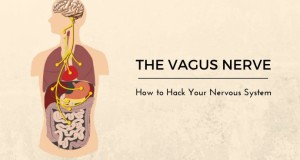
The Vagus Nerve and meditation are intertwined. The Vagus Nerve roughly translated means “wandering nerve”. It travels from the brain stem down to the abdomen and connects with many major organs participating in many of our bodily functions such as breathing, digestion, heart rate and many more. It is intimately connected to the parasympathetic branch of the autonomic(automatic) nervous system and therefore plays a big role in regulating stress. The autonomic nervous system runs our bodies automatically without us having to participate. Functions such as heart rate are a function of the autonomic nervous system.
The autonomic nervous system has two branches, the sympathetic and the parasympathetic. The sympathetic branch is responsible for putting us in fight or flight and the parasympathetic branch is responsible for taking us out of fight or flight and regulating our bodies when not involved with a fight or flight event.
Stress levels are at historic highs and one of the reasons for that is the phenomena of getting stuck in fight or flight. For a number of reasons our nervous systems are getting stuck in the sympathetic mode meaning that the changes that take place in our body/mind during fight or flight are not being resolved after the event happens. Consequently those changes, to varying degrees, stay with us for extended periods of time. This results in chronic stress which leads to a host of physical, mental and emotional symptoms.
Science has given us a number of tools whereby we can measure various bodily functions to determine stress levels. One of the most effective ways to measure these stress levels is by studying the Vagus Nerve stimulation. When the Vagus Nerve gets stimulated it influences the parasympathetic branch of the autonomic nervous system to come out of fight or flight thereby reducing stress. Here’s how that happens through meditation.
We know that meditation, particularly mindfulness meditation(full attention to the present moment) is effective in lowering stress. Mindfulness meditation is the most studied approach to meditation having over 2500 studies published worldwide with an average of 200 more per month being published. I consider it to be the hub of the meditation wheel in that it enhances all the other meditation approaches and can be a stand alone practice itself. These studies show that meditation can increase energy, reduce stress, slow breathing, decrease anxiety, reduce pain, increase blood flow and provide a sense of peace to name a few. When the Vagus Nerve receives the signals from these meditation effects it sends a message to the brain that all is well, there is no danger and there is no need to be in fight or flight. The brain then sends the message to the autonomic nervous system which stimulates the parasympathetic branch to come out of fight or flight and regulate the systems into balance. This is an example of the Vagus Nerve and the brain working together. The brain can send messages to the body and the body to the brain through the Vagus Nerve.
It is interesting to note that a function of the body previously thought to run automatically can in fact be influenced consciously through meditation. This is very important and gives us insight into the possibility of many ways that we can consciously participate in our health and well being. This is yet another demonstration of the mind/body connection and how our thoughts, emotions and physical sensations are interconnected and how meditation can assist in the smooth running of the system.
